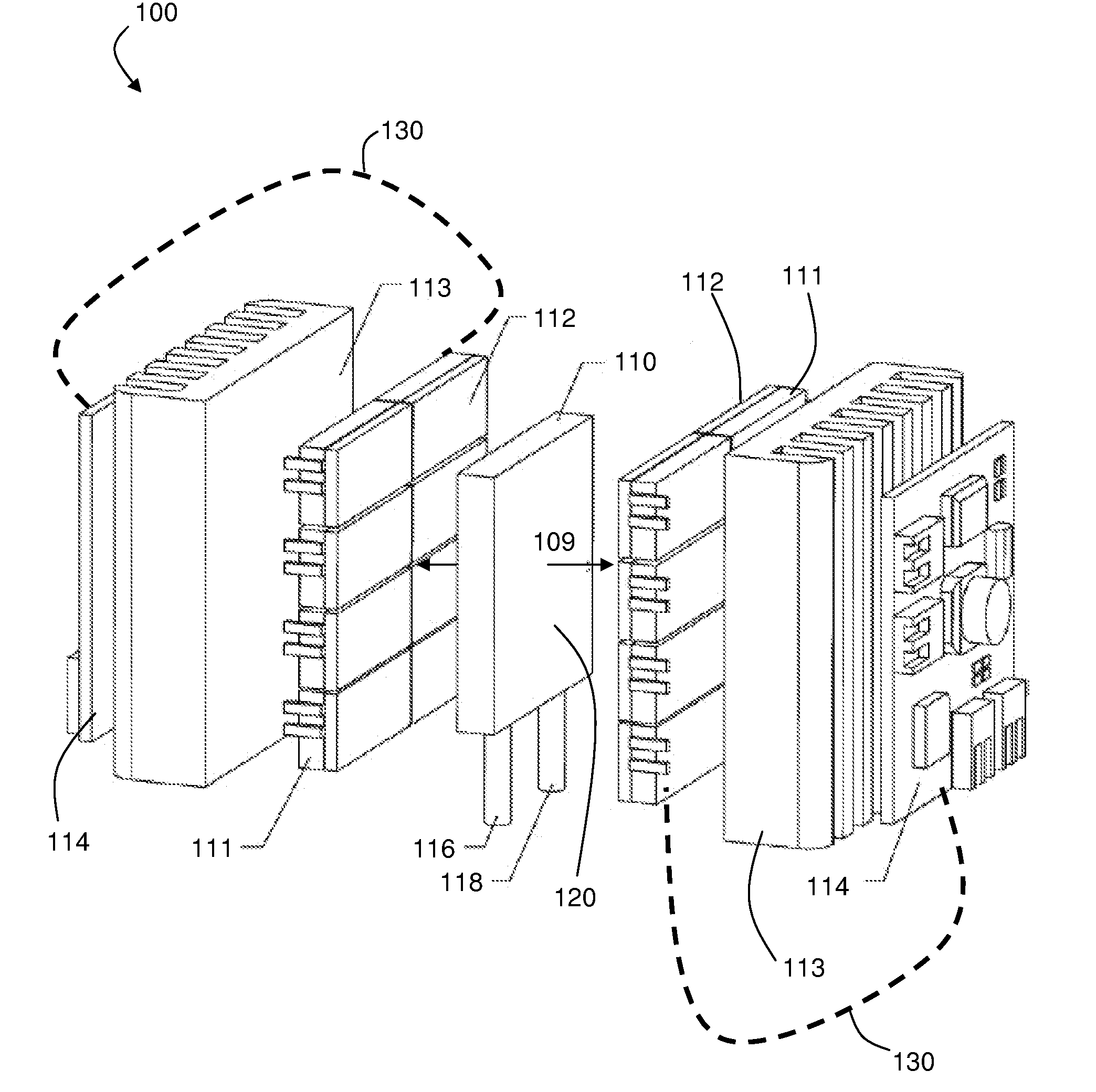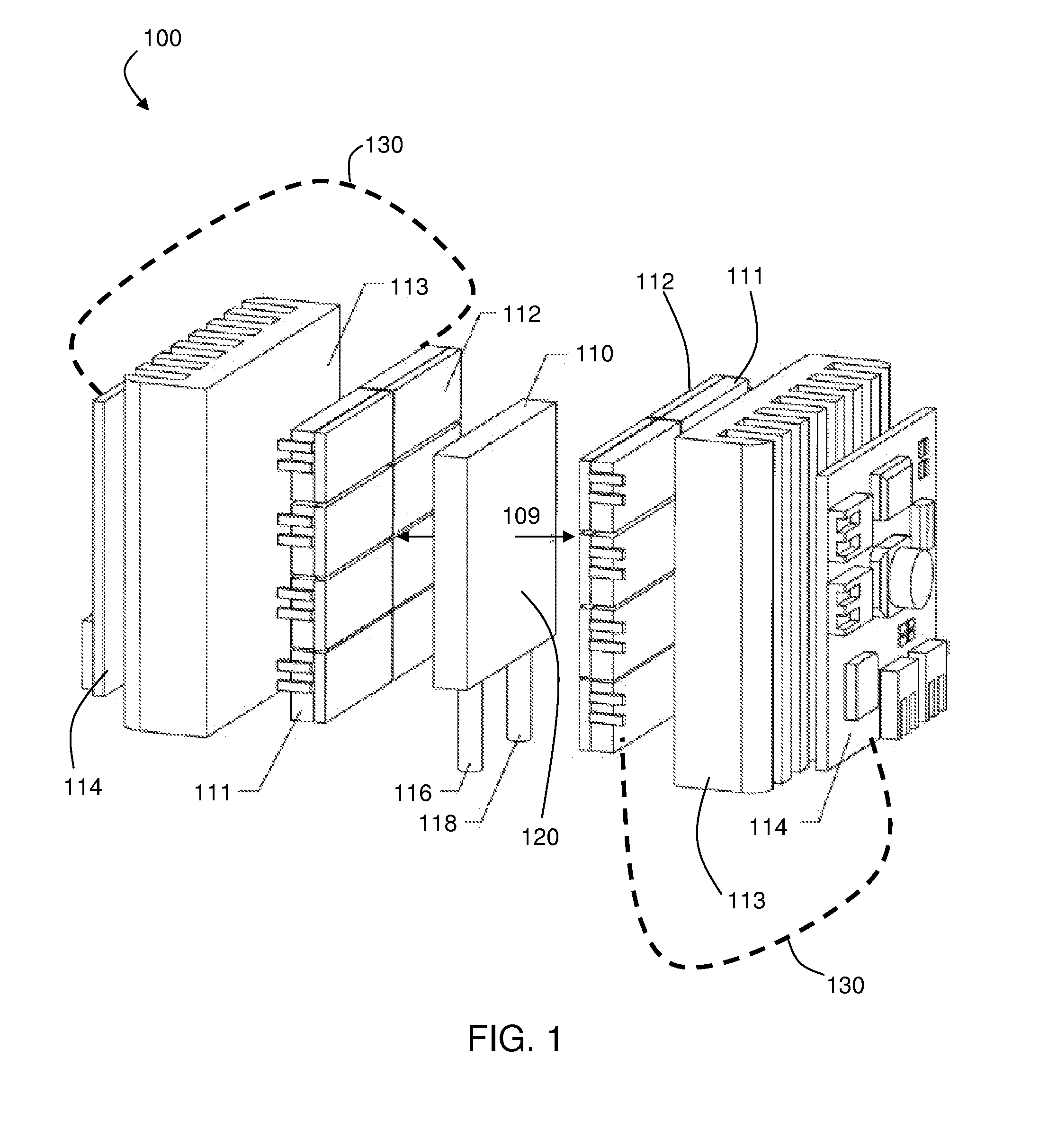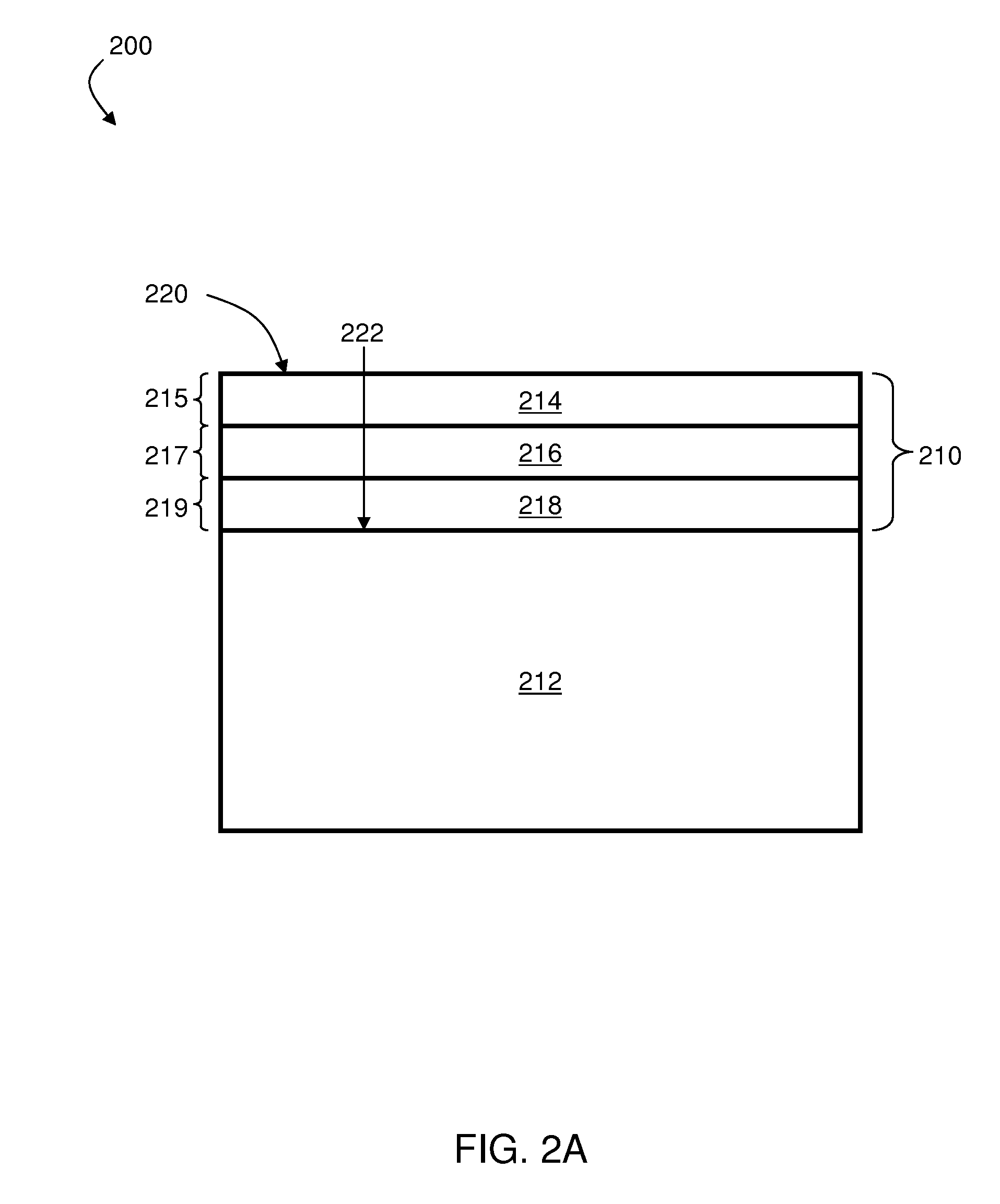Thermophotovoltaic energy generation
- Summary
- Abstract
- Description
- Claims
- Application Information
AI Technical Summary
Benefits of technology
Problems solved by technology
Method used
Image
Examples
example 1
[0092]This example describes determination of conditions under which thermophotovoltaic (TPV) system performance is enhanced in an embodiment of the inventive system. In this example, two thermophotovoltaic systems were chosen and system parameters were adjusted to enhance system performance (with constraints): micro-TPV generators and solar thermal TPV systems. This example demonstrates that appropriately chosen figures of merit can be increased by over an order of magnitude in both cases, illustrating the tremendous promise of this approach.
[0093]The performance of the structures discussed in this example was studied via a combination of optical and thermal models. Two tools were used to compute the optical properties of these structures, particularly focusing on absorptivity. For relatively simple 1D and 2D structures with dispersion, the absorptivity was computed as a function of wavelength using a transfer matrix method implemented within a freely available software package dev...
example 2
[0124]This example describes a system in which a radioactive isotope is used to heat an emitter in a thermophotovoltaic energy generation system. Radioactive isotopes have relatively high energy densities and long lifetimes, making them attractive as power sources. The scheme described in this example is capable of generating 4 W with an efficiency of over 25% and a lifetime of over one year.
[0125]A concept of the system is shown in FIG. 20. The battery operates by using the heat from the decay of an isotope (e.g., 238Pu or 147Pm) to heat the container holding the isotope to over 800° C. The thermal output of the radioactive heat source is 17-24 W (depending on isotope), and the power to the load is 4 W. A combination of two photonic crystals, one placed on the surface of the radioactive isotope container that enhances the thermal emission below 2.3 microns and the second photonic crystal placed near the radiating body prevents radiation of wavelengths longer than 2.3 microns while ...
example 3
[0130]This example describes a system in which the performance of a thermophotovoltaic system is enhanced by adjusting the voltage applied to one or more TPV cells to enhance the power generated by the TPV cell(s). Voltage adjustments are achieved using a low-power maximum power point tracking (MPPT) converter for a TPV power generator system. The system in this example is similar to the one illustrated in FIG. 4. Although the focus of this example is on a micro-fabricated TPV generator, this approach is applicable to other TPV systems such as radioactive isotope powered TPV, and solar-TPV.
[0131]FIG. 23 includes a plot outlining the I-V characteristic for one TPV module, which includes four series-connected GaInAsSb PV diodes. The bottom plot of the figure includes the corresponding power versus voltage graph, which clearly shows a maximum power point (MPP). The MPP typically changes with operating conditions such as incident irradiation and cell junction temperature, and can be con...
PUM
 Login to View More
Login to View More Abstract
Description
Claims
Application Information
 Login to View More
Login to View More - R&D
- Intellectual Property
- Life Sciences
- Materials
- Tech Scout
- Unparalleled Data Quality
- Higher Quality Content
- 60% Fewer Hallucinations
Browse by: Latest US Patents, China's latest patents, Technical Efficacy Thesaurus, Application Domain, Technology Topic, Popular Technical Reports.
© 2025 PatSnap. All rights reserved.Legal|Privacy policy|Modern Slavery Act Transparency Statement|Sitemap|About US| Contact US: help@patsnap.com



